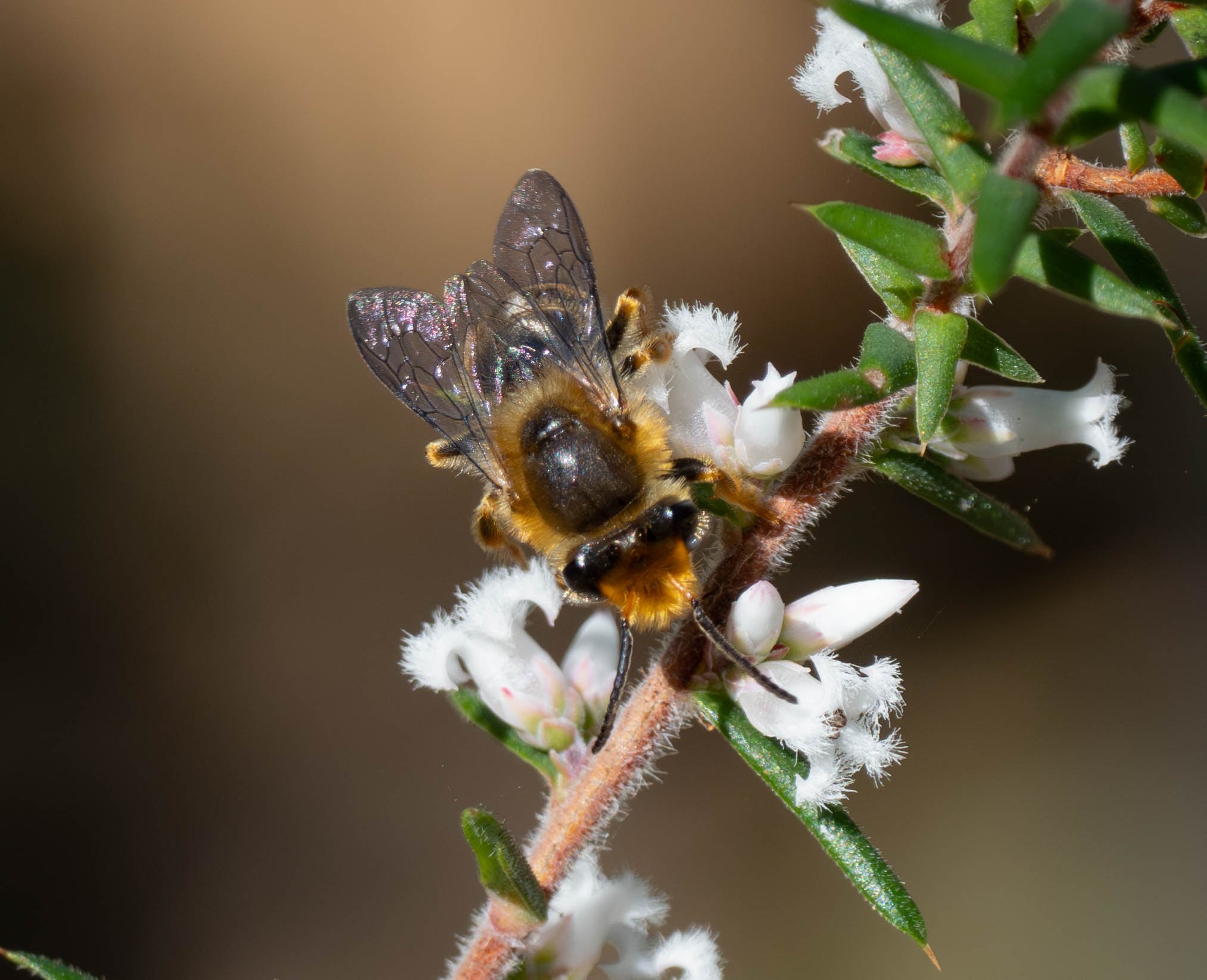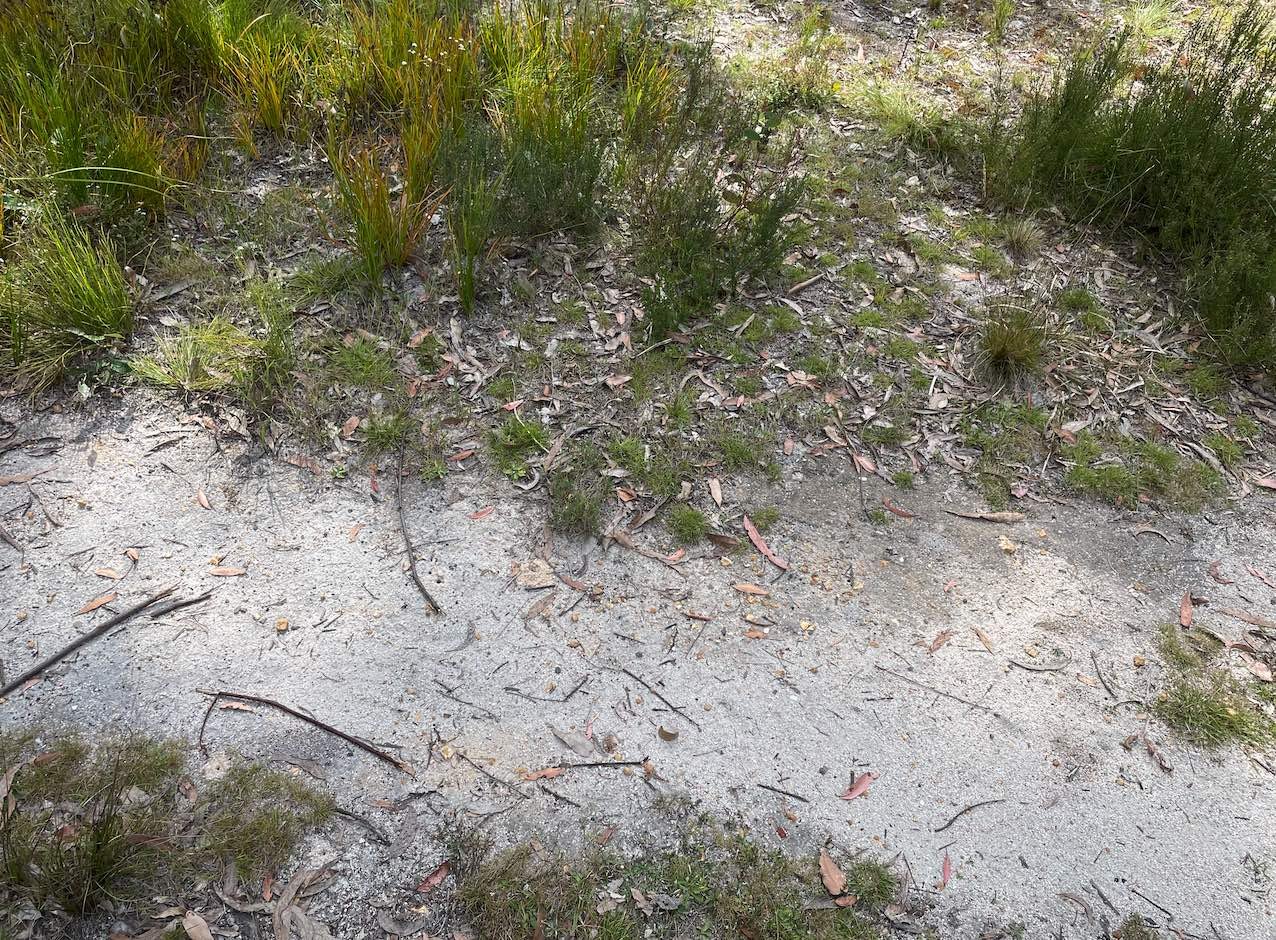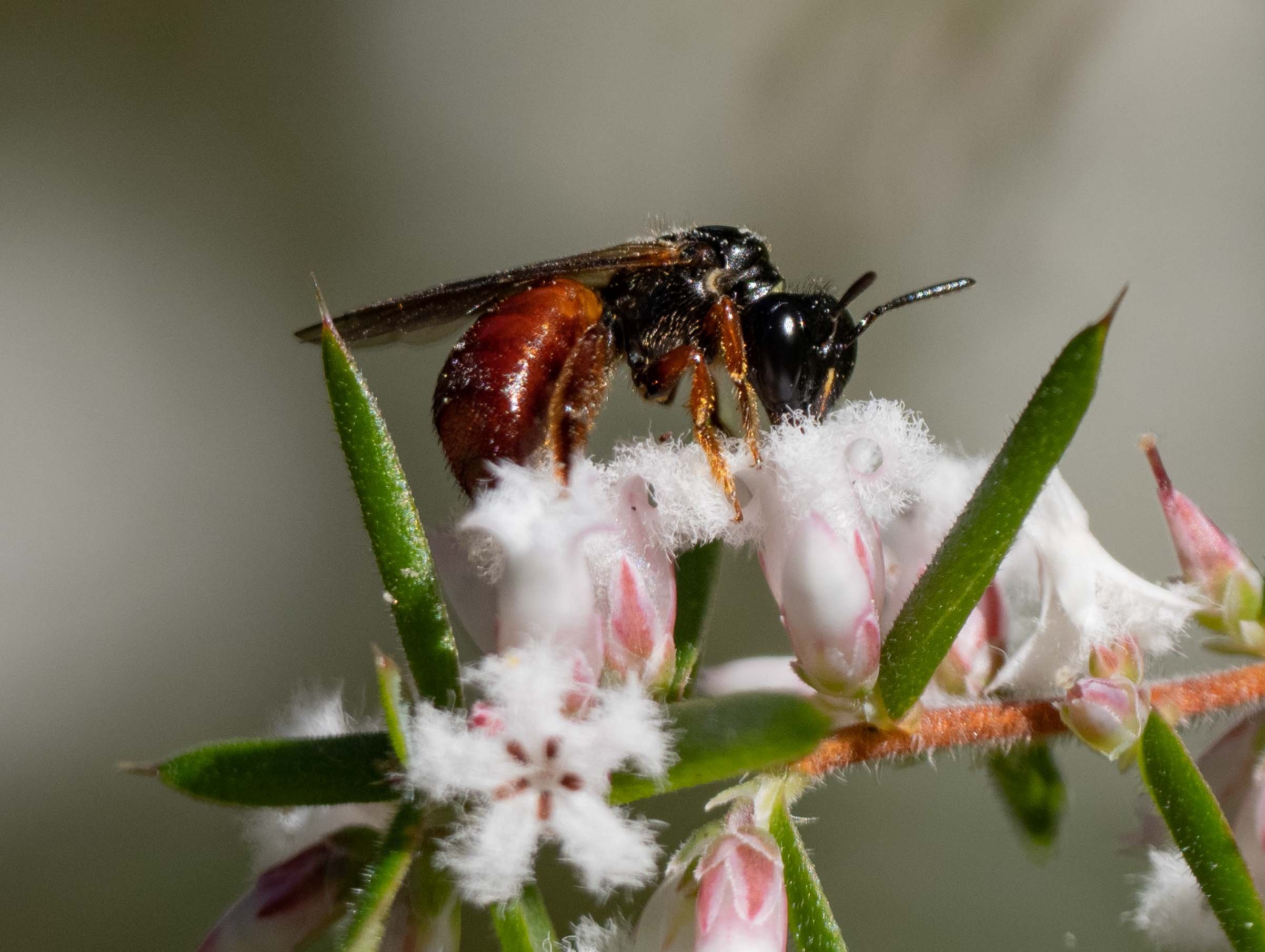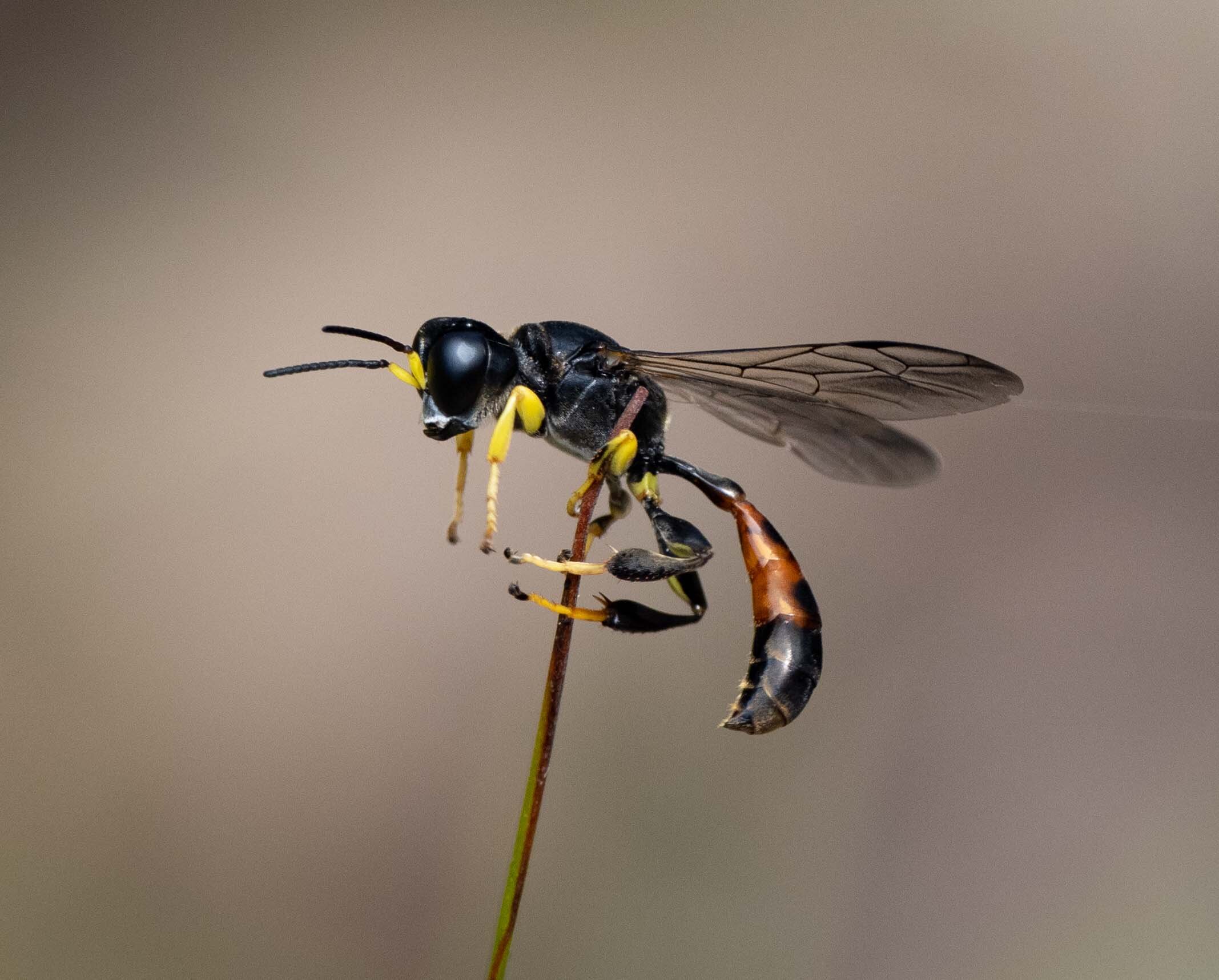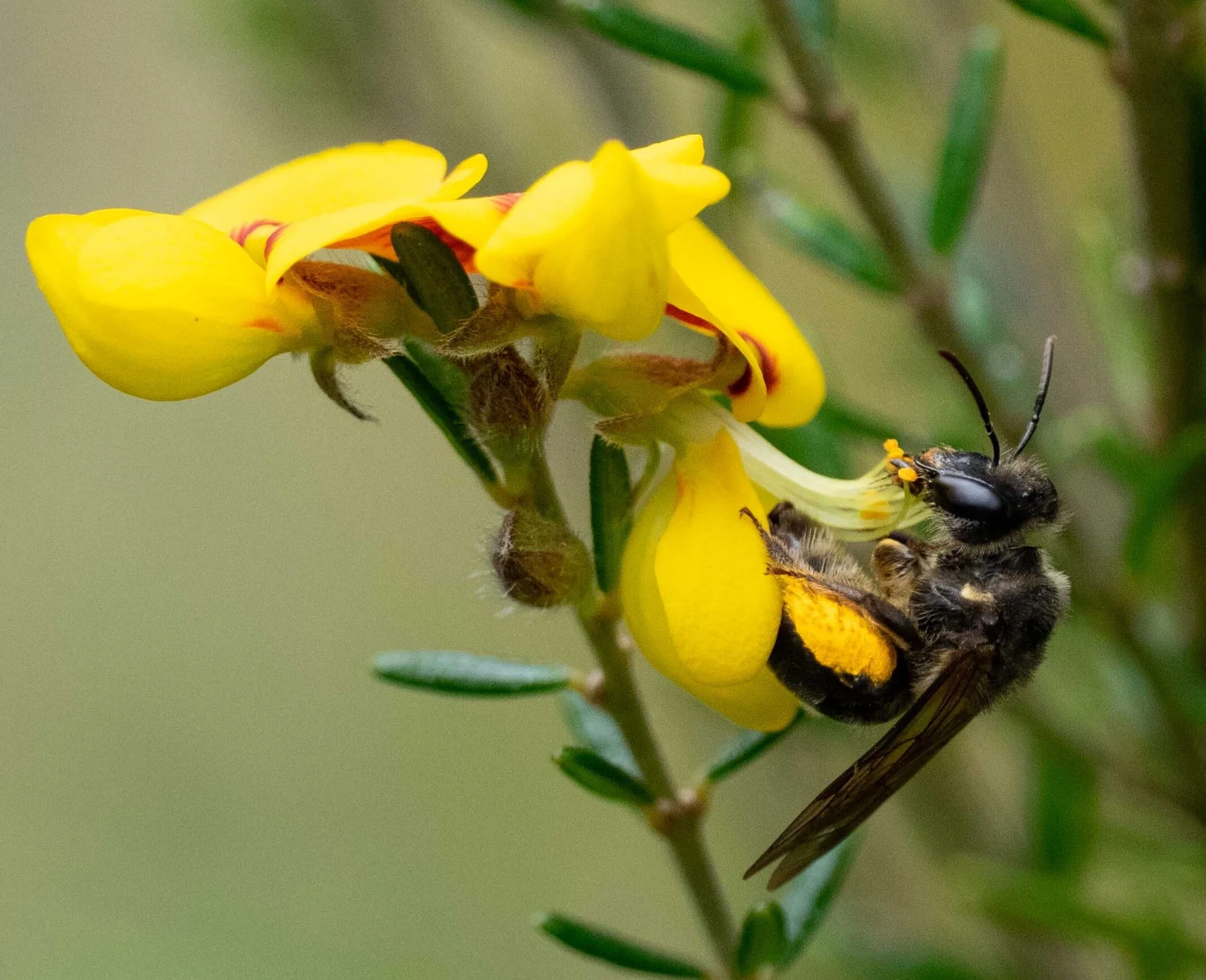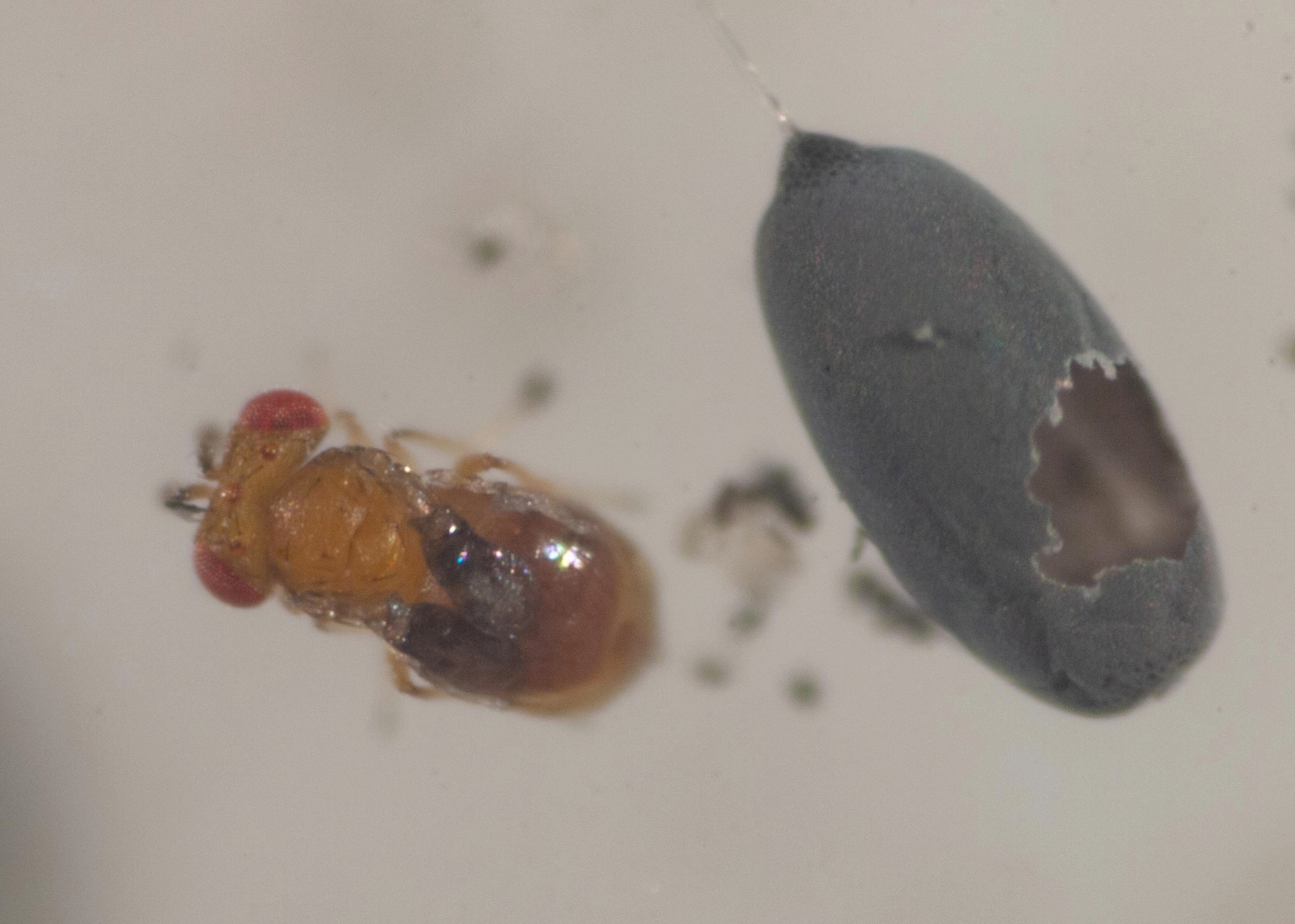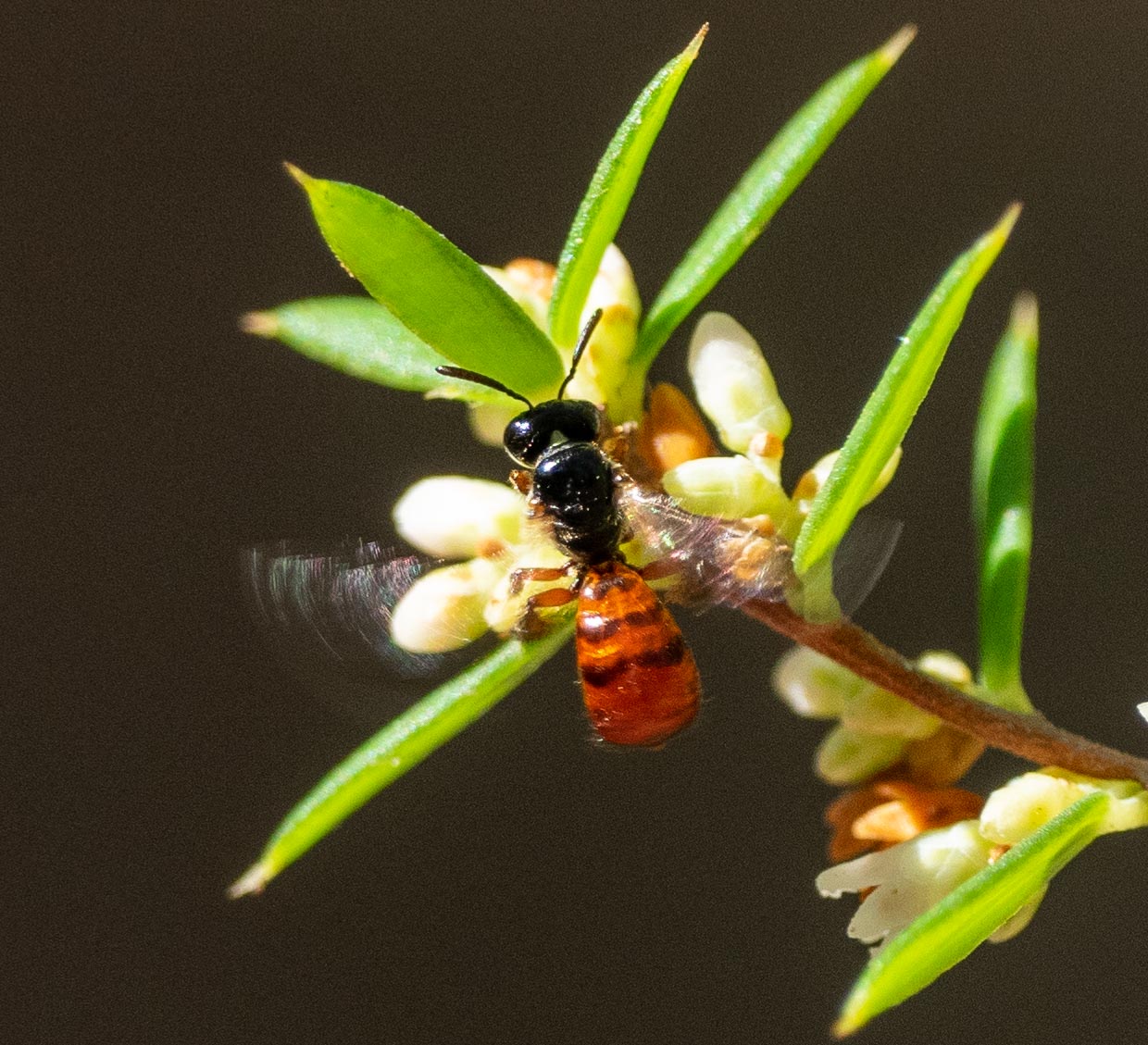Getting to know bees

This season I've set myself a little challenge: try to get to know our local bee species. How hard can it be?, I naively thought. After all, they're a well-studied group of insects and photographs of them abound on the internet.
So this week I've been hanging about a few flowering plants, closely watching who comes and goes.
Identifying bees
First, I've realised that I actually need to become more familiar with European Honey Bees (Apis mellifera) in order to be sure I can recognise native bees when I see them.
We see large numbers of Honey Bees. They are perhaps our most common introduced species here in the forest. The ones we see are almost certainly from feral populations – I don't think there are any managed hives within the roughly 6km foraging range reported for Honey Bees.
Feral Honey Bees are a recognised threat in natural environments as they compete with other insects for food, and with birds and mammals for tree hollows. We have not identified any hives on site, but there could well be one or more in the adjacent forests.
The huge pollen baskets on the Honey Bee's hind legs are distinctive. The only native bees that carry their pollen in this way are tiny insects and so can't be confused with Apis mellifera.
And I've also read that only Honey Bees have densely hairy eyes!
So, what about the native species?
There are about 1700 named species of bees in Australia, and they nearly all belong to one of the following four families:
1: Apidae (191 species, plus the Honey Bee)
Bees in this family have long tongues and all carry their pollen on the outer side of the hind tibia (think 'lower leg'). Australia's 11 species of social, 'stingless' bees belong to this family. Only these social bees, including the honey bee, have a specialised 'basket' for pollen. All others simply use an arrangement of long hairs.
2: Colletidae (871 species)
Members of this huge family are all 'short-tongued' bees. Their mouthparts cannot be extended and they have a blunt, mop-like appearance. In other ways, they vary greatly. They either carry pollen on their hind legs OR they are hairless and instead carry the pollen inside their crops. These hairless bees can easily be mistaken for wasps.
3: Halictidae (384 species)
The Halictid bee tongue is 'dagger-like' and although the tongue itself is short, it is attached to the end of an extendable, jointed 'arm'. They carry pollen on a combination of hind tibia AND femur (think 'upper leg'), and some also use the underneath of the abdomen (technically, the metasoma when it comes to bees).
4: Megachilidae (169 species)
These long-tongued bees are often quite large and perhaps best recognised by the way they carry pollen. They don't use their legs at all, but rather carry large loads on the underside of the abdomen. They famously cut and carry circular pieces of leaves, which they use in nest construction ... hence their common name, 'leaf-cutter bees'.
The list of features above is my cheat-sheet for trying to identify bee sightings. It will not always work, and will rarely be enough. But it's a start. I drew the information from a variety of sources, but most particularly from Ken Walker's excellent newsletters written for Bowerbird (click here to access copies of Bowerbird Bugle ... in particular, editions 41 & 42).
So, after having spent many (many) hours reading and developing a plan for bee ID, I've now spent a challenging couple of days trying to identify the bees I photographed this week. And, to be honest, I feel like I'm making very little progress. This is truly not easy. I think I'll actually have to collect a few bees in order to really be confident of anything. But, in the meantime, the images below give some insight into the diversity and general appearance of some of our native bees. The identifications, however, are definitely a work-in-progress!
a) Reed Bees (Exoneura sp.) - APIDAE
Reed Bee (Exoneura sp.) Family: APIDAE
The long tongue is not necessary here
Note the pollen-laded hind tibia
Note the flattened abdomen end
Since first photographing and identifying Reed Bees (Exoneura sp.) a few weeks ago, we regularly see them feeding at flowers. They are not one of the social bee species, although they do form nesting colonies in hollowed out stems of plants. They belong to the group commonly called Carpenter Bees.
b) Lipotriches (?) - HALICTIDAE
This medium-sized bee with an apparently banded abdomen is likely to be an Halictidae. The hind legs look to have both the tibia and the femur loaded with pollen. If I had managed a decent photo of the wing venation I could be more confident of both the family and the genus. The tongue shape would have helped too. Alas, I have only this image so I'm basing my tentative ID on similarities with published photos of Liptotriches.
c) Lasioglossum sp. (?) HALICTIDAE
A little larger than Exoneura and without the flattened end to the abdomen.
d) Hylaeus sp. COLLETIDAE
I have only seen this striking species a couple of times. It lacks hairs and rather resembles a wasp. I managed to get a few shots as it seemed to rest and preen, yet it never stopped beating its wings. [update: Ken Walker from the Australian Museum/Bowerbird has confirmed that this is a male of the genus Hylaeus. He also commented that it is more difficult to identify males to species level than it is females]

















